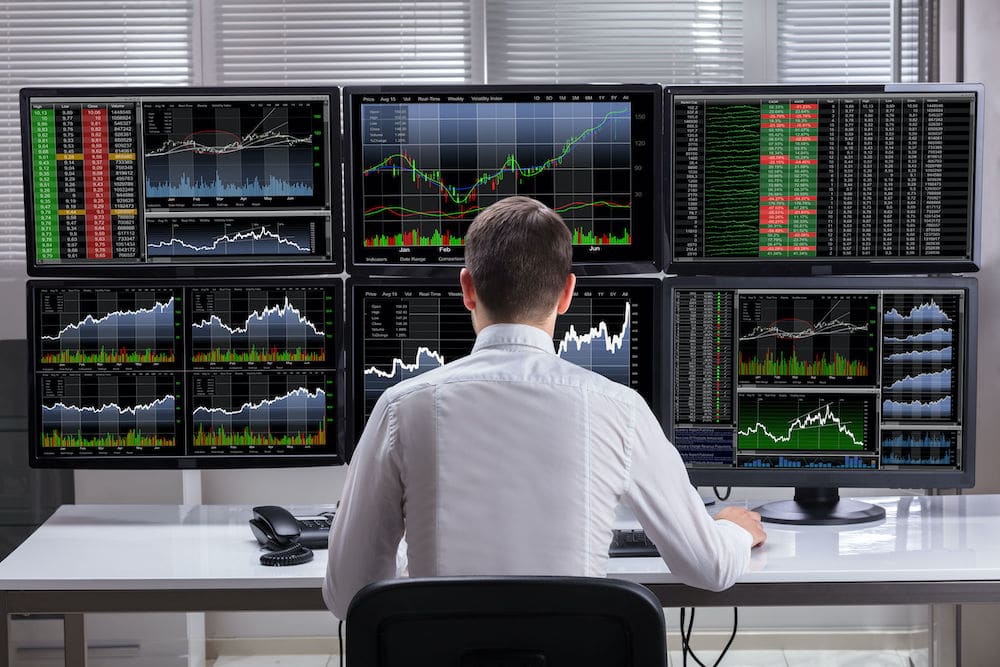
Written by Chris C.
The last eight months of trading on the S&P/ASX 200, the stock market index that provides the most accurate representation of the Australian economy, is a clear indication of the challenges that traders face daily. In several months late last year, the ASX 200 posted losses that appeared critical at first glance. However, despite those losses, the ASX 200 experienced a strong 2019 overall.
The ASX 200 then went from strength to strength at the start of 2020, although global economic uncertainty provoked a sharp decline in the market’s value from mid-February. Nevertheless, the ASX 200 exemplifies how traders must remain level-headed in the face of dramatic market losses.
Last year the ASX 200 showed a capacity to be able to bounce back from losses, so investors will now be closely monitoring the Australian economy’s ability to rebound from the tough financial conditions that arrived in February. While some of the 200 companies on the index may fall in value, other stocks on the ASX 200 might post percentage gains.
The biggest challenge for investors is to anticipate when the index as a whole may struggle, or when individual companies will defy trends and remain comparatively resilient in times of economic uncertainty.
Here is an overview of some of the most significant losses on the ASX 200 in recent months. In each scenario, the market came back strongly. If traders can identify the turning point for the index after similar losses in the future, then they may be able to swing the markets in their favour.
August 2019
August the 15th was the worst day for the ASX 200 for around 18 months, with $63 billion being wiped off the value of the shares on the 200 listed companies. This was a fall of 187.8 points/2.85%, with the decline driven by growing fears of a global recession. Notable fallers included Australia’s big four banks, which plummeted in value by around 3%.
The trade conflict between the United States and China was one of the most significant factors contributing to recession fears, with the protracted dispute still affecting markets today. However, the ASX 200 quickly recovered from the loss of August the 15th, with faith in government spending propelling an upward trend for the subsequent month.
October 2019
Market sentiment couldn’t shake off the concerns of a global recession, with those persistent worries prompting more big losses on the ASX 200 in October. The start of October saw the index shed $74 billion across two days, with the 2.2% drop on October the 3rd the worst decline since August.
Energy companies and mining giants suffered the most, given the extent that a potential recession would restrict their profits. As with August, this sharp fall was followed by a period of slow but steady growth on the ASX 200, as more positive noises began to emanate from the US-China trade talks.
February 2020
In 2019 the ASX 200 posted its best annual gain for ten years, with that upward trajectory continuing in 2020 as the index posted a record high on February the 19th. The ASX 200 was derailed from that track in the last week of February, demonstrating how changing global circumstances can destabilise indices that had recently inspired confidence.
The ASX 200 may have reached a new peak during the month, but the index ultimately fell by 8.2% between the start and end of February, driven by fears of reductions to consumer demand and industrial production. This month is a microcosm of the challenge that traders face on all indices, not just the ASX 200. Even the strongest-performing indices are vulnerable to volatility, which makes it vital that investors regularly monitor news developments.
Rises on the ASX 200 in March proved to be fleeting, with stagnating global trade and a struggling Australian dollar keeping the index on a general downward trend. Yet traders will look at events in 2019 and be encouraged that the ASX 200 has demonstrated an ability to recover strongly following dramatic losses.
Related Articles
- Forex vs Crypto: What’s Better For Beginner Traders?
- Three Great Technical Analysis Tools for Forex Trading
- What Does Binance Being Kicked Out of Belgium Mean for Crypto Prices?
- Crypto Traders and Coin Prices Face New Challenge as Binance Gives up its FCA Licence
- Interpol Declares Investment Scams “Serious and Imminent Threat”
- Annual UK Fraud Audit Reveals Scam Hot-Spots
Forex vs Crypto: What’s Better For Beginner Traders?
Three Great Technical Analysis Tools for Forex Trading
Safest Forex Brokers 2024
| Broker | Info | Best In | Customer Satisfaction Score | ||
|---|---|---|---|---|---|
| #1 |
|
Global Forex & CFD Broker |

Best Trading Conditions
Visit broker
|
||
| #2 |
|
Global Forex Broker |

BEST SPREADS
Visit broker
|
||
| #3 |
|
Globally regulated broker |

BEST CUSTOMER SUPPORT
Visit broker
|
||
| #4 |
|
Global CFD Provider |

Best Trading App
Visit broker
|
||
| #5 |
|
Global Forex Broker |

Low minimum deposit
Visit broker
|
||
| #6 |
|
Global CFD & FX Broker |

ALL-INCLUSIVE TRADING PLATFORM
Visit broker
|
||
| #7 |
|
Global Forex Broker |

Low minimum deposit
Visit broker
|
||
| #8 |
|
CFD and Cryptocurrency Broker |

CFD and Cryptocurrency
Visit broker
|
||
|
|
|||||
Forex Fraud Certified Brokers
Stay up to date with the latest Forex scam alerts
Sign up to receive our up-to-date broker reviews, new fraud warnings and special offers direct to your inbox


